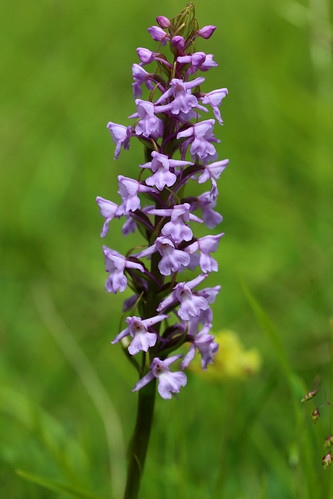 Common Spotteds are also everywhere, including in Dover itself, numbers were slightly down on previous years, but only just.
Common Spotteds are also everywhere, including in Dover itself, numbers were slightly down on previous years, but only just.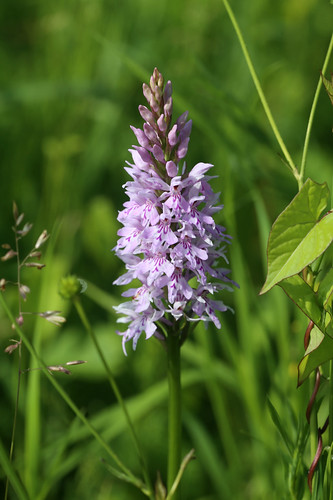 We went to visit the Medway Valley to the last remaining fresh water meadow in the county to see the Early march Orchid. Not that rare nationally, but here in Kent this is all where it is found, and the dry conditions had made the meadow just be muddy, and not that deep either, as the further encroaching by Common Spotted and their interbreeding with the Early Marsh meant that there was just the one pure Early Marsh to be seen, and that was already going over.
We went to visit the Medway Valley to the last remaining fresh water meadow in the county to see the Early march Orchid. Not that rare nationally, but here in Kent this is all where it is found, and the dry conditions had made the meadow just be muddy, and not that deep either, as the further encroaching by Common Spotted and their interbreeding with the Early Marsh meant that there was just the one pure Early Marsh to be seen, and that was already going over.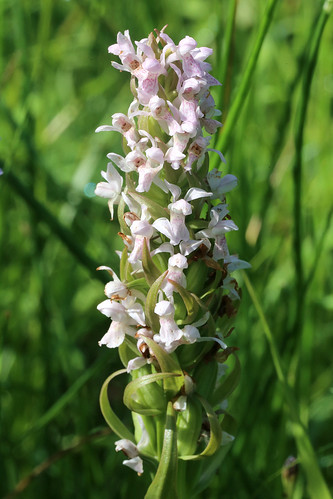 At Hothfield, another hyper-rare Kent habitat, the Heath Spotted orchids thrived. A week or so later than previous, but in good numbers in the nearly dry conditions of the bog, in fact most of the bog-living plats did survive in the nearly dry conditions, which was a surprise.
At Hothfield, another hyper-rare Kent habitat, the Heath Spotted orchids thrived. A week or so later than previous, but in good numbers in the nearly dry conditions of the bog, in fact most of the bog-living plats did survive in the nearly dry conditions, which was a surprise.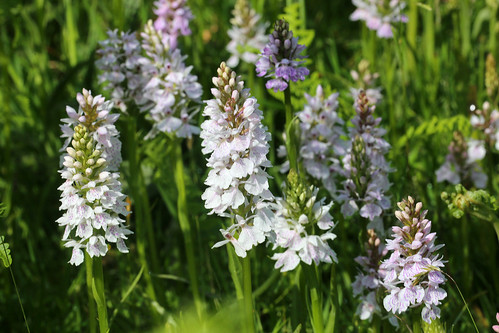 A week later and after several aborted attempts to find the tiny Musks, I did find two tiny spikes. However, the dry conditions at the down and sheer weight of numbers meant that the area which was already well trampled, became flattened to the extent the chalk fragrants that had also been growing there were trampled into the ground. And as I had helped spread news of their location I did feel partially responsible,
A week later and after several aborted attempts to find the tiny Musks, I did find two tiny spikes. However, the dry conditions at the down and sheer weight of numbers meant that the area which was already well trampled, became flattened to the extent the chalk fragrants that had also been growing there were trampled into the ground. And as I had helped spread news of their location I did feel partially responsible,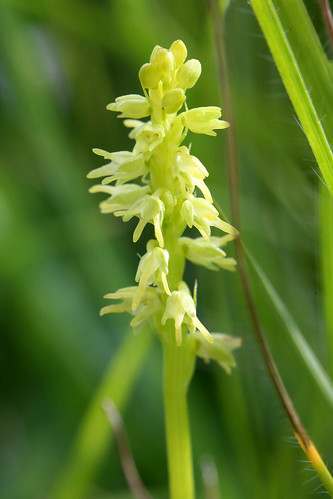 Over the past few years, I have talked to various people at both Dover District COuncil and Kent County Council about not mawing various areas so to protect the orchids growing, and the one chap I spoke to in 2017 told me about the colony of orchids growing outside his office window in Dover. I saw some shots posted from a friend this year, so we went to investigate, and I was rewarded with this very unusual spike, with a flower half normal and half var. flavescens. It was one of about a dozen spikes, including other Bees and Pyramidal. But this was the real beauty.
Over the past few years, I have talked to various people at both Dover District COuncil and Kent County Council about not mawing various areas so to protect the orchids growing, and the one chap I spoke to in 2017 told me about the colony of orchids growing outside his office window in Dover. I saw some shots posted from a friend this year, so we went to investigate, and I was rewarded with this very unusual spike, with a flower half normal and half var. flavescens. It was one of about a dozen spikes, including other Bees and Pyramidal. But this was the real beauty.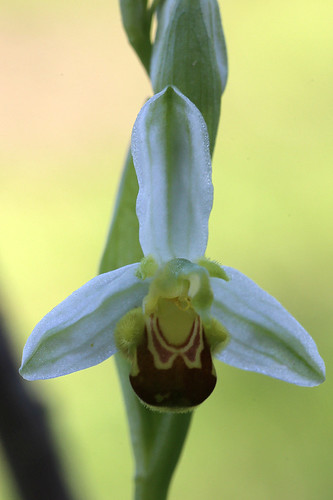 Meanwhile, at the coast, the Lizards at Sandwich were doing their usual bonkers thing. Though again, numbers down, but they put on a good show and as ever, wother the seven quid entrance fee to get onto the estate.
Meanwhile, at the coast, the Lizards at Sandwich were doing their usual bonkers thing. Though again, numbers down, but they put on a good show and as ever, wother the seven quid entrance fee to get onto the estate.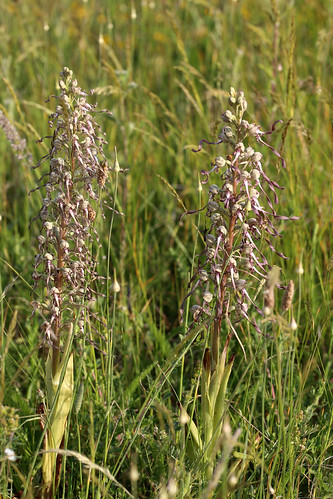 I never tire of their madness.
I never tire of their madness.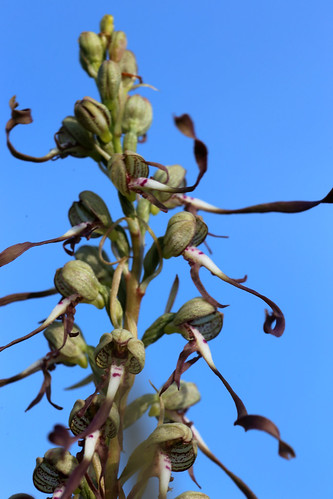 Also about were the first of the Pyramidals, thriving among the long tussock grass down by the links.
Also about were the first of the Pyramidals, thriving among the long tussock grass down by the links.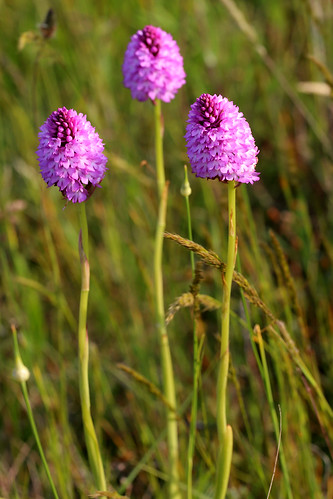 And the handful of Bee were showing well, too.
And the handful of Bee were showing well, too.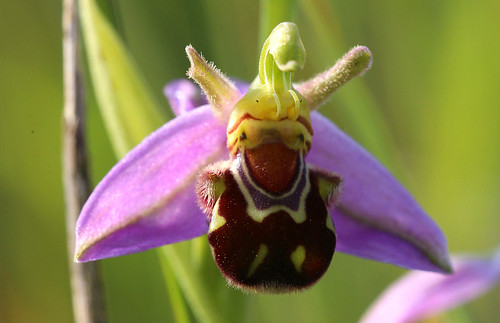 Also at Sandwich, the huge colony of CSO x SMO were doing their thing, spikes of all sizes, colour and patterns, interbreeding with each other like crazy.
Also at Sandwich, the huge colony of CSO x SMO were doing their thing, spikes of all sizes, colour and patterns, interbreeding with each other like crazy.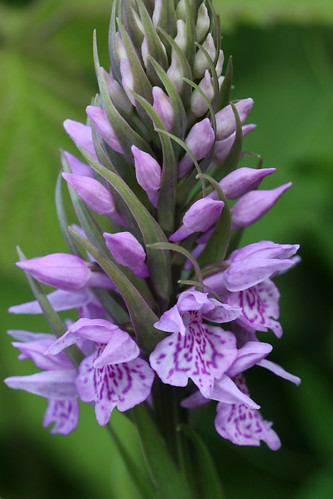 Time never waits, and soon at the end of June, it is time for the Helleborines, with the Marsh first to show in the dune slacks at a well known reserve. Access is easier now, so you can wander to your heart's delight among the only Kent site for these, perhaps the most beautiful Kent orchid species.
Time never waits, and soon at the end of June, it is time for the Helleborines, with the Marsh first to show in the dune slacks at a well known reserve. Access is easier now, so you can wander to your heart's delight among the only Kent site for these, perhaps the most beautiful Kent orchid species.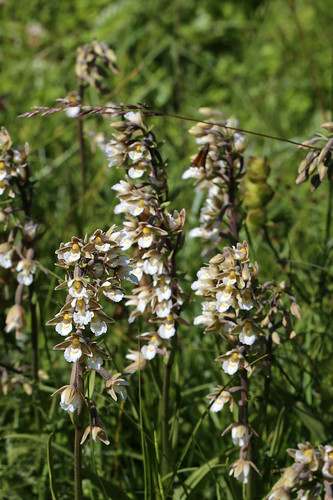
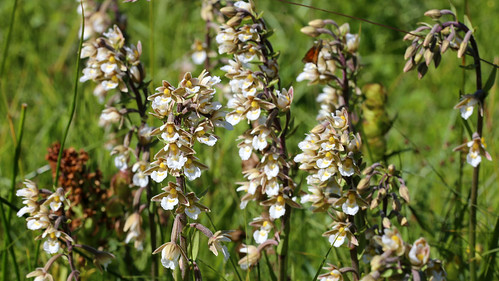 By July 10th, the fat lady (orchid) was singing, and the Broad Leaved were beginning to open, and at a little known mid-Kent site, the meadow that had been grazed three years ago was now covered in BL spikes of all sizes, densities and colours.
By July 10th, the fat lady (orchid) was singing, and the Broad Leaved were beginning to open, and at a little known mid-Kent site, the meadow that had been grazed three years ago was now covered in BL spikes of all sizes, densities and colours.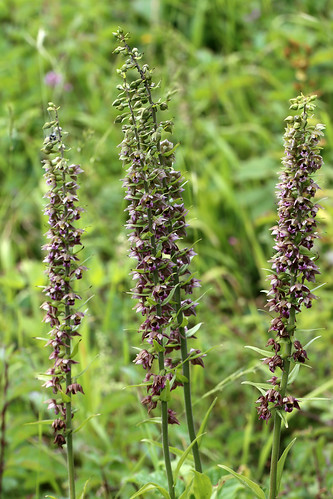
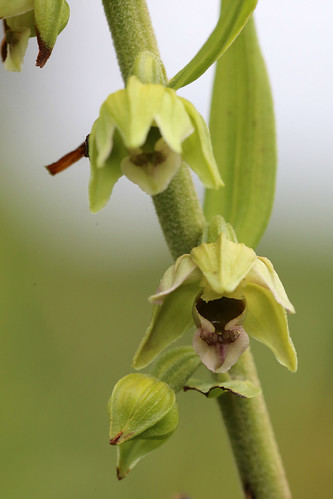 At another well know site, I came across what appeared to be the rare Violet x Broad Leaved hybrid, Epipactis x schulzei. Thing with orchids and their variants and hybrids, get two orchidists together to dicuss the plant, and odds are they won't agree. I feel happy enough that it was as I described, others not so.
At another well know site, I came across what appeared to be the rare Violet x Broad Leaved hybrid, Epipactis x schulzei. Thing with orchids and their variants and hybrids, get two orchidists together to dicuss the plant, and odds are they won't agree. I feel happy enough that it was as I described, others not so.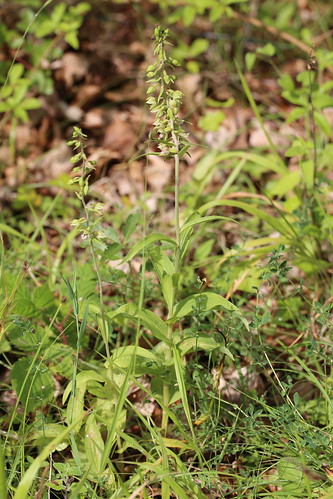 The end of July brought the Violets out. We found yet more spikes at the wood near to us, and shared this with a few others too.
The end of July brought the Violets out. We found yet more spikes at the wood near to us, and shared this with a few others too.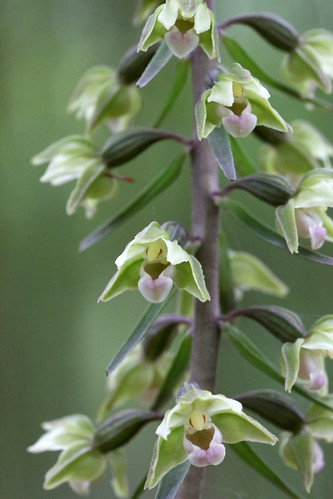 I bought a new ring flash to snap these, and the results were not too bad, but some more work needed.
I bought a new ring flash to snap these, and the results were not too bad, but some more work needed.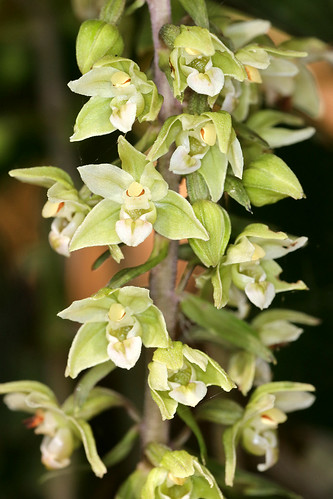 Up in the north of the county, the Green Flowered were mowed by the local council, and that coupled with the dry conditions meant they were not worth revisiting, although a friend of mine did go back and was rewarded with on spike with a fully open flower.
Up in the north of the county, the Green Flowered were mowed by the local council, and that coupled with the dry conditions meant they were not worth revisiting, although a friend of mine did go back and was rewarded with on spike with a fully open flower.Finally, the 24th August saw the Autumn Ladies Tresses show in the village. I managed to get the county recorders to list the location with the council as my contact in DDC left his job earlier that year, and the mowers could not be stopped. They did thrive and showed well despite the dry conditions.
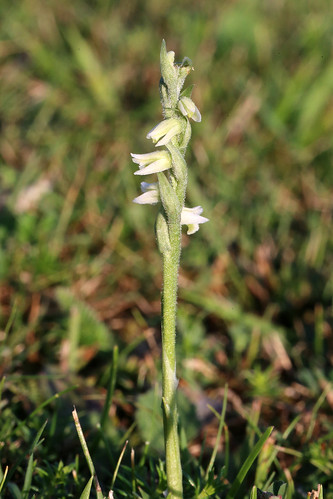
 One final mention goes to these Dutchman's Pipes, or Yellow Birds Nest. Not an orchid or related to the Birds Nest Orchid, these are seen as an indicator species for the legendary Ghost Orchid. I was told of a colony, and on my third search did find them. And magical they were too. Too dry this year for Ghists, so I did not look, but next year.......
One final mention goes to these Dutchman's Pipes, or Yellow Birds Nest. Not an orchid or related to the Birds Nest Orchid, these are seen as an indicator species for the legendary Ghost Orchid. I was told of a colony, and on my third search did find them. And magical they were too. Too dry this year for Ghists, so I did not look, but next year.......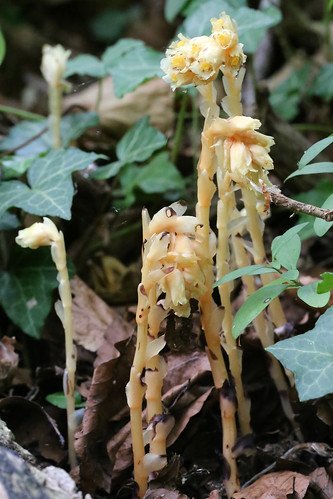
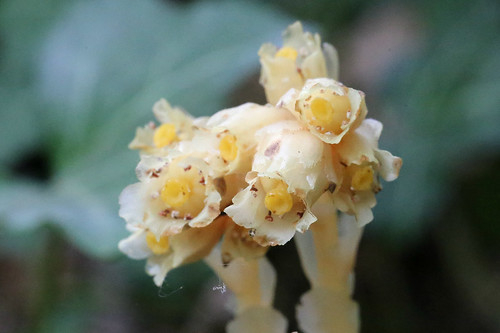

2 comments:
Don't fall over in surprise, I read all three parts of your "The 2018 Orchid Season," bet you didn't think you ever hear me say that ;-)
I thought it was a fellow mad orchidist who had commented!
Many thanks for your dedication.
Post a Comment